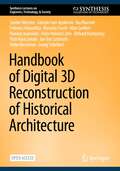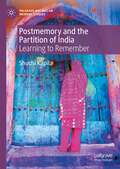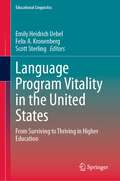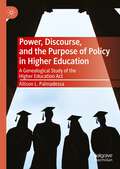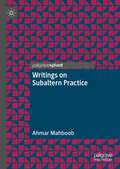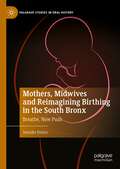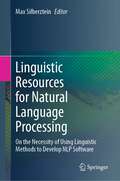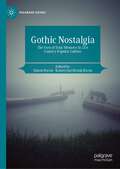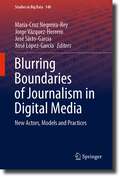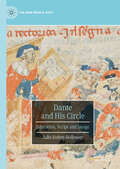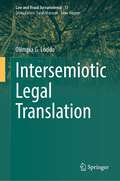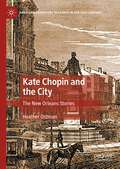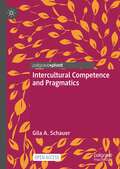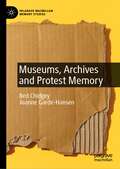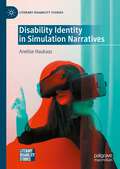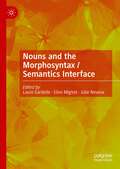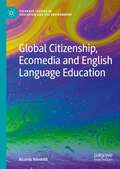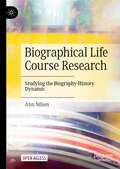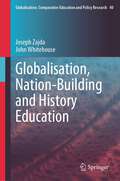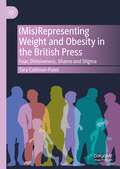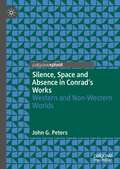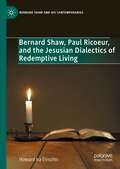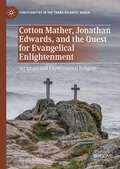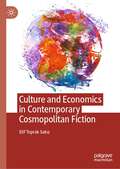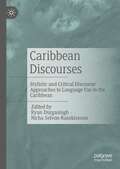- Table View
- List View
Handbook of Digital 3D Reconstruction of Historical Architecture (Synthesis Lectures on Engineers, Technology, & Society #28)
by Sander Münster Piotr Kuroczyński Marinos Ioannides Heike Messemer Fabrizio Ivan Apollonio Ina Bluemel Federico Fallavollita Riccardo Foschi Marc Grellert Peter Heinrich Jahn Richard Kurdiovsky Jan-Eric Lutteroth Georg SchelbertThis open access book is a handbook for students, experts and interested parties who want to learn more about digital 3D reconstruction of historical architecture. The book provides answers to the core questions of the subject: What is a digital 3D model or a digital 3D reconstruction? How are they created and what are they used for? Practical instructions, condensed knowledge, explanations of technical terms and references to example projects, literature and further references provide information of varying density and thus enable an individual introduction to the subject.The book combines extensive knowledge on the topic of "digital 3D reconstruction of historical architecture" and provides practical instructions for independent implementation. Up to now, there has been no cross-disciplinary vocabulary for technical terms in this field, so this publication makes a start.The book is aimed at students, experts in the field and the interested public and offers various possibilities for the different target groups to delve deeply into the subject.The book was created within the research network "Digital 3D Reconstruction as Tools for Research in Architectural History," which was funded by the German Research Foundation (DFG) from 2018 to 2023. The authors combined their expertise in the fields of art and architectural history, architecture, university teaching and media informatics.
Postmemory and the Partition of India: Learning to Remember (Palgrave Macmillan Memory Studies)
by Shuchi KapilaThis book examines the memories of the Partition of India in 1947 with a focus on the generation of postmemory (those who came after it) and how partition experiences have been shared (or not) and understood. It explores the formal and narrative properties of different memory practices that have been built around the partition, and the methods of oral historians involved in collecting testimonies as part of the 1947 Berkeley partition archive.
Language Program Vitality in the United States: From Surviving to Thriving in Higher Education (Educational Linguistics #63)
by Scott Sterling Emily Heidrich Uebel Felix A. KronenbergThe perception of a permanent enrollment crisis in US postsecondary foreign language education has shaped our profession’s image for an entire generation of educators. Over the past 30 years, this crisis rarely invited self-examination or inspired creativity. Instead, it was routinely attributed to external factors: shrinking budgets, unsympathetic administrators, disengaged students. This volume is refreshingly optimistic: After providing a nuanced picture of the complex enrollment situation and focusing on perceptions of language education among undergraduate students, the volume features an inspiring panorama of successful models that revitalized language programs at a wide range of institutions. The diversity of approaches to post-secondary language education in the United States featured in this volume highlights that there are no simple “one size fits all” solutions. To be transformational, initiatives need to be intimately calibrated to the evolving needs and desires of our institutions’ most important stakeholder: the student. Per Urlaub, Massachusetts Institute of Technology, MA, USA
Power, Discourse, and the Purpose of Policy in Higher Education: A Genealogical Study of the Higher Education Act
by Allison L. PalmadessaThis book traces the full history of the Higher Education Act of 1965 in its entirety, to the present. The fifty-six-year history of this landmark legislation is analyzed as a genealogical phenomenon through multiple methodological and theoretical frameworks. This allows the researcher to study the Act not in a linear or single approach, rather the blend of lenses and methods creates a means to study policy-making as a site of ideological reproduction and results in the exposure of power dynamics that obfuscate the hidden agenda by those in positions of power.
Writings on Subaltern Practice
by Ahmar MahboobSubaltern theory emerged as a small voice within academia decades ago. Over time, this work generated significant debate and numerous publications, talks, and conferences. However, little has changed in the experienced lives of the masses. This led people to wonder: “the subalterns seem to have a voice, but can they take action?”; or, in other words, is there subaltern practice?This collection of essays and poems, written with a broad audience in mind, hopes to demonstrate not just how the subaltern can identify and question hegemonic practices, but how they can create alternative frameworks and material that enable themselves and their communities. In doing so, this book aims to demonstrate not just how deep the colonial poisons run, but also how to detoxify ourselves and the environment around us.The writings included in this book study the inequalities that we experience in and around us and suggest actions and practices that can help us regain harmony. It is a call for action and a sharing of ideas that can enable us to regain balance and fulfil our human responsibilities.
Mothers, Midwives and Reimagining Birthing in the South Bronx: Breathe, Now Push (Palgrave Studies in Oral History)
by Jennifer DohrnWomen came through the doors at a community-based birthing center in the South Bronx seeking prenatal care. They had heard about the center from a neighbor, a parents' group at their children’s school, or the local mosque or church. What they found when they arrived was a brightly-colored waiting area that resembled a living room, children immersed in games in a corner, and staff that reflected the mosaic of cultures living in the surrounding apartments. They also met midwives who asked about their lives, their children, their families and traditions. If pregnancies developed complications, back-up obstetricians were there to give higher levels of care, with the women returning to the midwifery center afterwards. The results were healthy mothers and healthy babies. For over twenty years the center became a haven for women’s health care and a national exemplar. It is a tragic and unjust paradox that the United States, the highest income country in the world and the country with the largest budget for perinatal care, has rising rates of maternal mortality that disproportionately affect women of color. Yet an inner-city maternity center with midwifery care found solutions to the challenge of making birth safe for low-income populations, especially women of color. This oral history presents the stories of twelve women who participated in this care. As they tell it, the experience changed their lives and their understanding of what safe, quality maternal care can achieve. Jennifer Dohrn examines the systems that perpetuate disparities in care, from global to local, and describes essential components needed for change, using oral histories as evidence for the way forward towards maternal health as a human right.
Linguistic Resources for Natural Language Processing: On the Necessity of Using Linguistic Methods to Develop NLP Software
by Max SilberzteinEmpirical — data-driven, neural network-based, probabilistic, and statistical — methods seem to be the modern trend. Recently, OpenAI’s ChatGPT, Google’s Bard and Microsoft’s Sydney chatbots have been garnering a lot of attention for their detailed answers across many knowledge domains. In consequence, most AI researchers are no longer interested in trying to understand what common intelligence is or how intelligent agents construct scenarios to solve various problems. Instead, they now develop systems that extract solutions from massive databases used as cheat sheets. In the same manner, Natural Language Processing (NLP) software that uses training corpora associated with empirical methods are trendy, as most researchers in NLP today use large training corpora, always to the detriment of the development of formalized dictionaries and grammars.Not questioning the intrinsic value of many software applications based on empirical methods, this volume aims at rehabilitating the linguistic approach to NLP. In an introduction, the editor uncovers several limitations and flaws of using training corpora to develop NLP applications, even the simplest ones, such as automatic taggers.The first part of the volume is dedicated to showing how carefully handcrafted linguistic resources could be successfully used to enhance current NLP software applications. The second part presents two representative cases where data-driven approaches cannot be implemented simply because there is not enough data available for low-resource languages. The third part addresses the problem of how to treat multiword units in NLP software, which is arguably the weakest point of NLP applications today but has a simple and elegant linguistic solution.It is the editor's belief that readers interested in Natural Language Processing will appreciate the importance of this volume, both for its questioning of the training corpus-based approaches and for the intrinsic value of the linguistic formalization and the underlying methodology presented.
Gothic Nostalgia: The Uses of Toxic Memory in 21st Century Popular Culture (Palgrave Gothic)
by Simon Bacon Katarzyna Bronk-BaconThis book is an original and innovative study of how Gothic nostalgia and toxic memory are used to underpin and promote the ongoing culture wars and populist politics in contemporary popular culture. The essays collected here cover topics from the spectral to the ecological, deep fakes to toxic ableism, Mary Poppins to John Wick to reveal how the use of an imaginary past to shape the present, creates truly Gothic times that we can never escape. These ‘hungry ghosts’ from the past find resonance with the Gothic which speaks equally of a past that often not only haunts the present but will not let it escape its grasp. This collection will look at the confluence between various kinds of toxic nostalgia and popular culture to suggest the ways in which contemporary populism has resurrected ideological monsters from the grave to gorge on the present and any possibility of change that the future might represent.
Blurring Boundaries of Journalism in Digital Media: New Actors, Models and Practices (Studies in Big Data #140)
by Xosé López-García Jorge Vázquez-Herrero María-Cruz Negreira-Rey José Sixto-GarcíaWhat changes have affected the definition of the boundaries of journalism in the last decade? How do technologies influence the boundaries of journalism? Are threats and opportunities identified in those blurred areas of journalism? The aim of this book is to answer these questions and to address, from different perspectives, the redefinition of the boundaries of journalism according to the most recent changes in digital media concerning actors, models, and practices.More than 40 authors from eleven countries contribute to this book, which is structured into six sections to analyze the principles of journalism today, sustainability strategies in the digital context, old and new actors, formats and narratives, adaptation to the mobile scenario and to social platforms, and the changes introduced by artificial intelligence. Undoubtedly, this book is of interest to both academics and professionals, as well as a crucial reference for scholars and students of media and journalism.Chapter 7 is available open access under a Creative Commons Attribution 4.0 International License via link.springer.com.
Dante and His Circle: Education, Script and Image (The New Middle Ages)
by Julia Bolton HollowayIn this book, Julia Bolton Holloway makes use of primary materials in documents, manuscripts and stone monuments in Florence, to place Dante's literary career in its rich context. Dante and His Circle discusses the encyclopaedic multicultural education in classical literature, law, ethics, rhetoric, diplomacy, poetry, music and cosmology Brunetto Latino gave to Guido Cavalcante, Dante Alighieri and Francesco da Barberino. Bolton Holloway traces Latino’s use of Arabic methods he had learned at the Court of Alfonso X el Sabio in Spain in 1260. Next Latino dictates his 'Rettorica', 'Tesoretto' and 'Tesoro' in Italian to his students, following the Sicilian Vespers, the manuscripts of their circle later coming to be re-edited, illustrated and published by Dante's fellow student, Francesco da Barberino, who survived them all and who likewise copied Alfonsine methods for producing the 'Danti del Cento' manuscripts of the 'Commedia'. The book ends by discussing Dante's Decolonialism. Each chapter provides Study Questions for further research.
Intersemiotic Legal Translation (Law and Visual Jurisprudence #11)
by Olimpia G. LoddoThe translation of legal documents in today’s globally interconnected world calls for novel approaches to overcoming traditional language barriers. The verbal language used in legal documents can be accompanied or even replaced by various types of semiotic resource, such as symbols, diagrams, and icons, while the advancement of digital tools and the introduction of new technologies offer those drafting contracts and other legal documents access to an ever-expanding toolbox for the translation process.This book makes a significant contribution to the existing literature on legal translation and intersemiotic translation by sharing valuable insights and opening up new avenues of inquiry, fostering further exploration of this evolving domain and enabling practitioners to use these diverse communication tools responsibly and effectively.Given the book’s structured multidisciplinary approach and extensive analyses of the characteristics of intersemiotic legal translation, its potential, and the complexities that arise at the intersection of law, language, and semiotics, it will appeal to legal practitioners, translators, semiotic scholars, and legal philosophers alike.Whether you are a legal professional aiming to expand your expertise, an academic seeking a new research direction, or are simply intrigued by the fascinating interplay of law, language, and semiotics, this book offers a valuable resource that sheds light on the unique dynamics of translating legal concepts using approaches other than traditional verbal communication. As such, it is an essential read for anyone who is interested in the changing landscape of law, language, and translation.
Kate Chopin and the City: The New Orleans Stories (American Literature Readings in the 21st Century)
by Heather OstmanThis book examines selected short stories and novels by Kate Chopin through the lens of the city of New Orleans. Chopin’s depictions of and references to New Orleans celebrate the vibrancy of this unique American city, but also illustrate the complex, interdependent relationships defined within its coded system of racial, gendered, and class designations. These stories feature canny depictions of the complexity of human struggles for freedom as well as love within this nineteenth-century southern city. While Chopin has been highly regarded as a local color writer and especially as a feminist literary icon, this book shows how the author’s “city” stories also point to her sophistication as an author who perceived the shifting literary landscape, and it identifies the ways many of these stories’ protomodernist elements anticipate the advent of the Modern era.
Intercultural Competence and Pragmatics
by Gila A. SchauerThis Open Access book examines the link between intercultural competence (IC) and pragmatics by asking frontline modern foreign language teachers in higher education teaching a variety of languages (e.g., Dutch, English, French, German, Italian, Spanish, Swedish) how they conceptualise intercultural competence and which skills, competences and knowledge they consider important in their teaching contexts. The data were collected with an online survey that focused on the relationship between intercultural competence and pragmatics.While international organizations such as the United Nations Educational, Scientific and Cultural Organization (UNESCO) or the Council of Europe (CoE) agree that intercultural competence should play an important role in education, it is not always clear what IC may encompass in specific teaching contexts and subject areas. Examining how modern foreign language teachers in higher education conceptualise intercultural competence and the value they attach as well as the attention they give to various areas of pragmatics in their teaching is highly important, since those language professionals may be the final teachers learners encounter during their formal foreign language education. They are therefore in a unique position to shape modern foreign language learners’ intercultural and pragmatic awareness, competence and skills.This book will be of interest to language professionals, modern foreign language teachers and teacher trainers, as well as students and scholars of applied linguistics, pragmatics, and language education.
Museums, Archives and Protest Memory (Palgrave Macmillan Memory Studies)
by Joanne Garde-Hansen Red ChidgeyThis book addresses the emergence of ‘protest memory’ as a powerful contemporary shaper of ideas and practices in culture, media and heritage domains. Directly focused on the role of museum and archive practitioners in protest memory curation, it makes a compelling contribution to our understanding of how social movements and activist experiences are publicly remembered and activated for social and environmental justice.
Disability Identity in Simulation Narratives (Literary Disability Studies)
by Anelise HaukaasDisability Identity in Simulation Narratives considers the relationship between disability identity and simulation activities (ranging from traditional gameplay to more revolutionary technology) in contemporary science fiction. Anelise Haukaas applies posthumanist theory to an examination of disability identity in a variety of science fiction texts: adult novels, young adult literature and comics, as well as ethnographic research with gamers. Haukaas argues that instead of being a means of escapism, simulated experiences are a valuable tool for cultivating self-acceptance and promoting empathy. Through increasingly accessible technology and innovative gameplay, traditional hierarchies are dismantled, and different ways of being are both explored and validated. Ultimately, the book aims to expand our understandings of disability, performance, and self-creation in significant ways by exploring the boundless selves that the simulated environments in these texts allow.
Nouns and the Morphosyntax / Semantics Interface
by Laure Gardelle Elise Mignot Julie NeveuxThis edited book seeks to bridge a gap in the existing literature on nouns, by exploring the exact relationship between their formal and semantic characteristics. The introductory chapter offers a thorough state of the art on the morphosyntactic and semantic angles in definitions of nouns, provides evidence of misalignments between morphosyntactic and semantic features, and argues that a multi-criterial angle is in fact inherent in the definition of the class of nouns. The following chapters bring together a representative cross-section of international-level research on the morphosyntax/semantics interface for nouns, covering a wide variety of languages from French-based creoles, German and Japanese to English, French, Italian, Russian and Uzbek. The focus of the volume is to take a special focus on the currently underestimated dynamic interplay between morphosyntax and semantics, at both language and discourse levels. It will be of interest primarily to academics (specialists of nouns, as well as anyone interested in the interplay between morphology, syntax and semantics) and graduate students in areas such as syntax, semantics, morphology, theoretical linguistics and discourse analysis.
Global Citizenship, Ecomedia and English Language Education (Palgrave Studies in Education and the Environment)
by Ricardo RömhildThis book presents a unique framework for the inclusion of ecomedia in the English language classroom to help learners cultivate global citizenship. Foregrounding learner agency in a world at risk, the author proposes a framework that hinges on human rights and critical eco-cosmopolitanism to help learners position themselves in discourses on climate change and act for transformation. The book discusses eco-documentaries as multimodal, factional texts against the background of cutting-edge research, refuting a definition based on the binary of fiction and non-fiction. Translating the insights gained from this discussion to the language education context, learners are conceptualised as active designers of meaning making when engaged with eco-documentaries. Based on this discussion, the book puts forth an innovative, multiliteracies-informed concept which is embedded in a sustainability-oriented pedagogy of hope, which encourages learners to learn and practice languages of hope and advocacy. The book will be of interest to scholars in the fields of ecopedagogy, sustainability education, global citizenship education and cultural learning, film pedagogy and language education, as well as language educators.
Biographical Life Course Research: Studying the Biography-History Dynamic
by Ann NilsenThis open access book explores an approach that connects individual and societal processes throughout history and shifting trends in sociological perspectives, influenced by C. Wright Mills’ theories of time and temporality. It traces its origins from American pragmatist thought and Chicago qualitative sociology in the early 20th century to the revival of biographical research in European and American sociology during the 1970s. The book shows empirical studies from this vibrant research approach can bridge methodological gaps between qualitative and quantitative biographical studies, applicable to various topics like class, gender, ethnicity, and intergenerational dimensions.
Globalisation, Nation-Building and History Education (Globalisation, Comparative Education and Policy Research #40)
by Joseph Zajda John WhitehouseThis book uses historiography and discourse analysis to provide a new insight into understanding the nexus between ideologies, the state, and nation-building—as depicted in history school textbooks. It focuses on the interpretation of social and political change, significant events, and examining possible new biases and omissions in school textbooks. The ‘Europeanization’ of history textbooks in the EU is an example of western-dominated Grand Narrative of pluralist democracy, multiculturalism, and human rights, according to the canon of a particularly European dimension. Various public debates in the USA, China, the Russian Federation (RF), Japan, and elsewhere, dealing with understandings of a nation-building, national identity, and history education point out to parallels between the political significance of school history and the history education debates globally.The book demonstrates that the issue of national identity and balanced representations of the past continue to dominate the debate surrounding the goals, dominant ideologies and content of history textbooks, and historical narratives. It concludes that competing discourses and ideologies will continue to define and shape the nature and significance of historical knowledge, ideologies and the direction of values education in history textbooks. This book provides an easily accessible, practical, yet scholarly insights into local and global trends in the field of history education, and should be required reading for a broad spectrum of users, including policy-makers, academics, graduate students, education policy researchers, administrators, and practitioners.
(Mis)Representing Weight and Obesity in the British Press: Fear, Divisiveness, Shame and Stigma
by Tara Coltman-PatelThis book is a linguistic analysis of the British obesity media narrative, analysing a large corpus of published newspaper articles to demonstrate how the language used perpetuates common misconceptions and stereotypes about weight and obesity, and then exploring the sociological effects of these widespread conceptualisations. Weight stigma and weight bias are misunderstood issues, and often underestimated in terms of their prevalence and effect by society at large. The author examines topics including the role of power and persuasion, the use of metaphor, the personal stories of members of the general public, and the gendered real-life consequences of arbitrary weight standards to provide a linguistic driven study of obesity in news media. Obesity is an issue which sits at the intersection of science and the humanities, and as such, although the research methods used are firmly situated within the field of Linguistics, this book will also be of interest to readers from fields as diverse as Sociology, Fat Studies, Media Studies, Medicine and Psychology.
Silence, Space and Absence in Conrad's Works: Western and Non-Western Worlds
by John G. PetersThis book considers the relationship between sound and silence in the works of Joseph Conrad, along with their ties to Western and non-Western space. Throughout Conrad’s works, a pattern emerges where Western space is associated with sound and non-Western space is associated with silence; similarly, Western space is portrayed as full of objects and activity, whereas non-Western space is portrayed as empty. As these tales progress, though, Conrad’s characters embark on transformational journeys that cause them to reassess the world they live in and sometimes even the nature of the universe. These journeys invariably occur through encountering non-Western space, and during the course of these journeys, the dichotomy between Western space, perceived as replete with sound and activity, and non-Western space, empty of such, blurs such that the fullness of the West is revealed to be simply a surface hiding the emptiness beneath. In the end, both Western and non-Western space are revealed to be absences, as the absence of sound becomes a correlative for the emptiness of space and the emptiness of space becomes a metonym for the cosmological emptiness of nothingness.
Bernard Shaw, Paul Ricoeur, and the Jesusian Dialectics of Redemptive Living (Bernard Shaw and His Contemporaries)
by Howard Ira EinsohnThis book explores a heretofore unremarked linkage between Bernard Shaw, the twentieth-century French thinker Paul Ricoeur, and Jesus of Nazareth. The ties that bind them are a foundational interest in the social teachings of the Nazarene and their use of a shared dialectics with respect to living the kind of compassionate life that holds out the promise in our contemporary world of achieving something approximating universal wellness on a healthy planet at peace with itself. This work argues that the three principal subjects of the study—independently of one another—used the same dialectical method to reach the same dialectically derived conclusion about how humans can live redemptively in a fractured world.
Cotton Mather, Jonathan Edwards, and the Quest for Evangelical Enlightenment: Scripture and Experimental Religion (Christianities in the Trans-Atlantic World)
by Ryan P. HoseltonThis book explores the early evangelical quest for enlightenment by the Spirit and the Word. While the pursuit originated in the Protestant Reformation, it assumed new forms in the long eighteenth-century context of the early Enlightenment and transatlantic awakened Protestant reform. This work illuminates these transformations by focusing on the dynamic intersection of experimental philosophy and experimental religion in the biblical practices of early America’s most influential Protestant theologians, Cotton Mather (1663-1728) and Jonathan Edwards (1703-1758). As the first book-length project to treat Mather and Edwards together, this study makes an important contribution to the extensive scholarship on these figures, opening new perspectives on the continuities and complexities of colonial New England religion. It also provides new insights and interpretive interventions concerning the history of the Bible, early modern intellectual history, and evangelicalism’s complex relationship to the Enlightenment.
Culture and Economics in Contemporary Cosmopolitan Fiction
by Elif Toprak SakızThis book investigates how culture and economics define novel forms of cosmopolitanism and cosmopolitan fiction. Tracing cosmopolitanism’s transition from universalism to vernacularism, the book opens up new avenues for reading cosmopolitan fiction by offering a precise and convenient set of terminology. The figure of the cosmoflâneur identifies a contemporary cosmopolitan character’s urban mobility and wandering consciousness in interaction with the global and the local. Posthuman cosmopolitanism also extends the meaning of cosmopolitan which comes to embrace the nonhuman alongside the human element. Defining narrative glocality, political hyper-awareness, and narrative immediacy, the book thoroughly explores how cosmopolitan narration forges direct responses to the contemporary world in postmillennial cosmopolitan novels. All of these concepts are elaborated in Ian McEwan’s Saturday (2005), Zadie Smith’s NW (2012), Salman Rushdie’s The Golden House (2017), and Kazuo Ishiguro’s Klara and the Sun (2021), to which world-engagement is central.
Caribbean Discourses: Stylistic and Critical Discourse Approaches to Language Use in the Caribbean
by Ryan Durgasingh Nicha Selvon-RamkissoonThis edited collection represents a first-of-its-kind exploration of English-related discourses in the Caribbean. Drawing from Critical Discourse and stylistic analyses, the book's wide-ranging chapters examine language as it is produced within the complex demographic milieu of the region. It addresses a critical lack of linguistic scholarship on discourse types from the Caribbean, since the major academic focus in the post-independence era has been on descriptive and interventionist work in Creole Linguistics. This volume seeks to add new dimensions to language in practice with its focus on the development of discourse types within the region, public policy, discourses surrounding the galvanising figure of the Caribbean Prime Minister, literary discourses, and gender and media representations. As a site of great variation, linguistic and otherwise, the Caribbean provides unique insight into the interplay of the socio-political and language in contemporary societies in the Global South. Based on work presented at the University of Trinidad and Tobago’s “Stylistics, Critical Discourse Analysis and Language Use in the Caribbean” 2021 conference, the book draws together papers from established Caribbeanists seeking to bridge the existing theoretical and analytical gap between the more macro, socio-political aspects of studies in the social sciences, and the more micro features of linguistic analysis. With its breadth of coverage and analysis, this volume has implications for work being done at all levels of university scholarship in the social sciences, media discourses, decolonisation practices, and language and society in postcolonial and multi-ethnic contexts worldwide.
